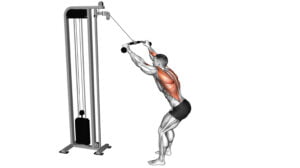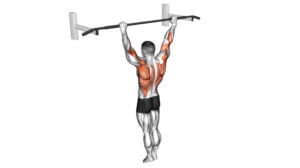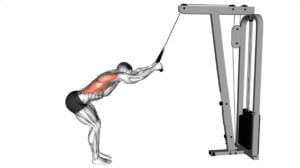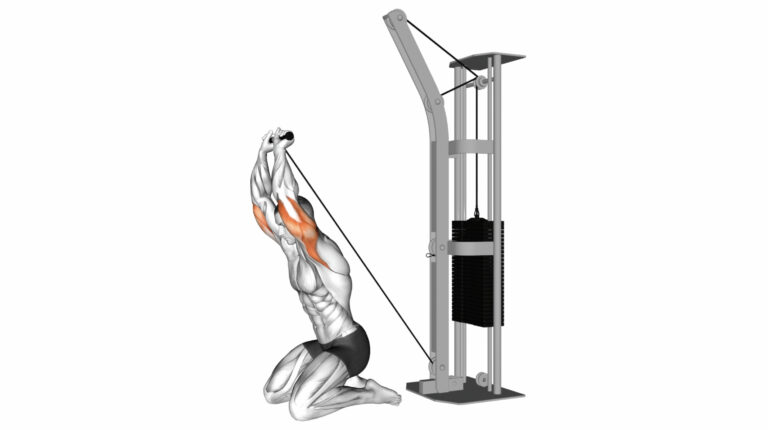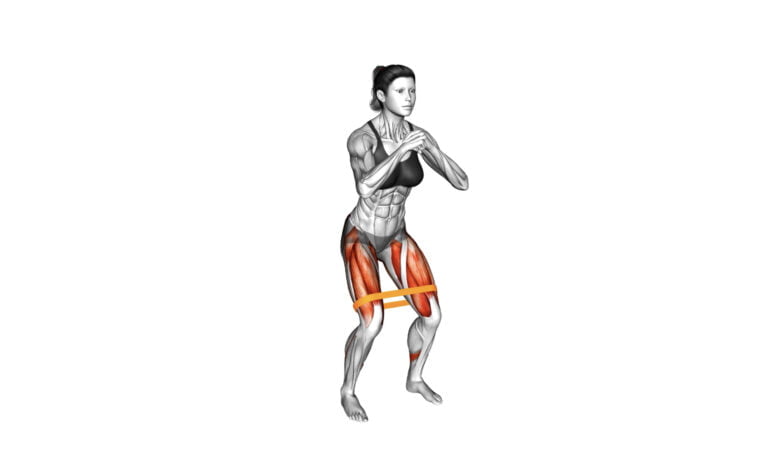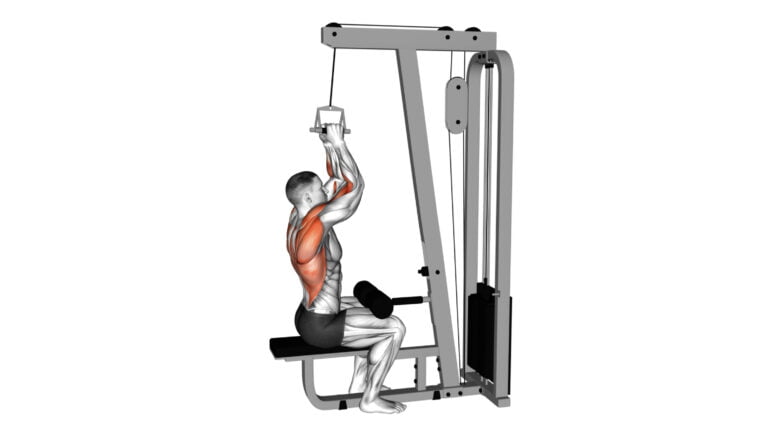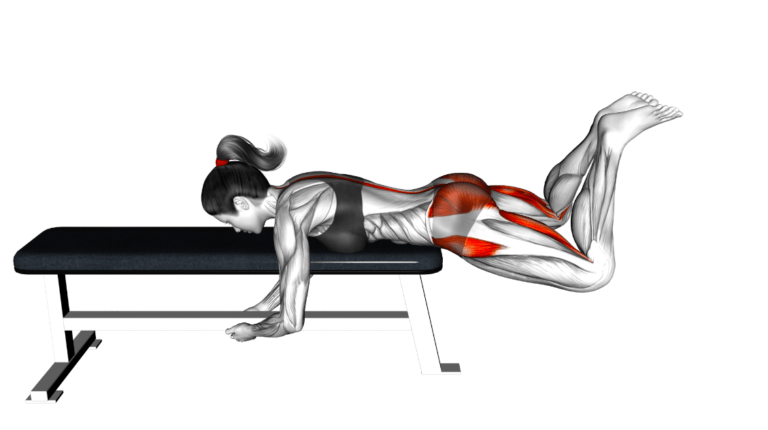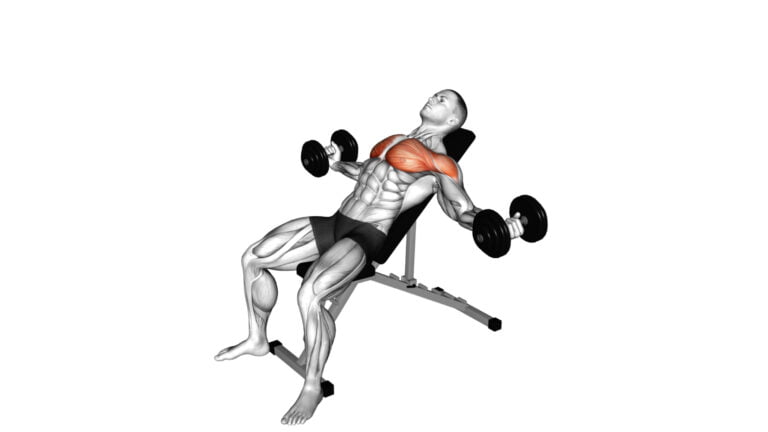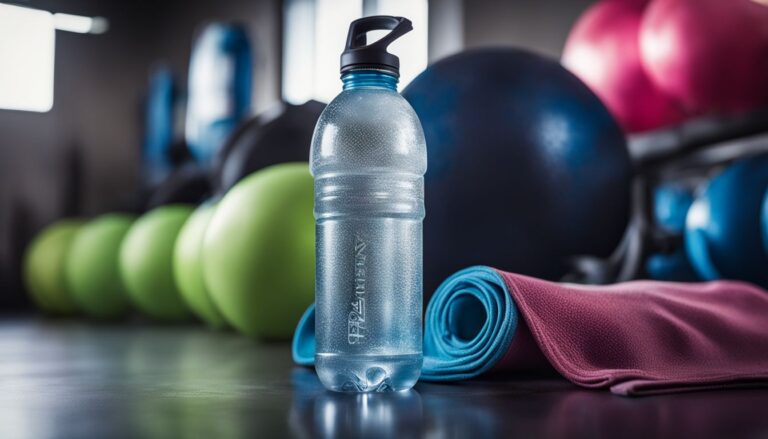10 Lat Dumbbell Exercises For Building A Stronger Back And Lats
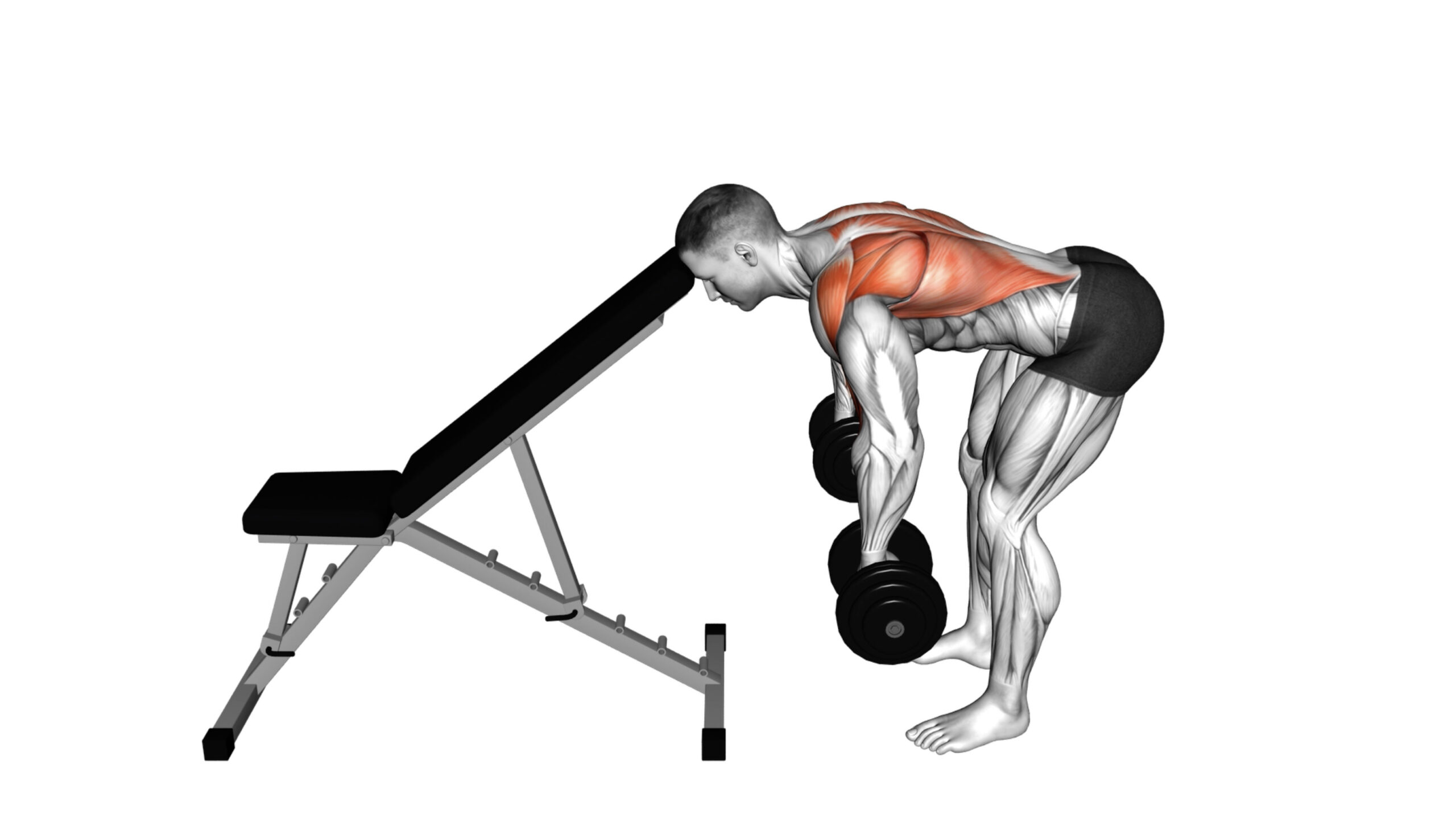
Many people work hard to get a stronger back but often miss out on key exercises that could turbocharge their progress. I have spent years in the gym, coaching athletes and fitness enthusiasts alike, sharpening my expertise on building muscle effectively and efficiently.
Through this journey, I’ve discovered that lat dumbbell exercises are goldmines for developing not just strength but also muscle balance and aesthetics.
Lat training with dumbbells offers an array of benefits including improved posture, enhanced shoulder health, and increased overall back strength. This article dives into ten powerful lat dumbbell exercises tailored to construct a formidable back.

Equipped with these workouts, you’ll unlock new levels of power and physique development that many standard routines overlook. Ready? Let’s build some muscle.
Key Takeaways
- Training lats with dumbbells not only sculpts a V – shaped torso but also significantly improves your pulling strength and spine stability.
- Variety in exercises, such as bent – over rows, pullovers, and renegade rows, target different muscle groups within the back, ensuring balanced development.
- Changing hand grips during workouts can work various parts of the lats for more comprehensive muscle growth.
- Gradually increasing the weight or number of reps you perform is key to building strength and size over time.
- Using other equipment like barbells or cable machines alongside dumbbells can offer new challenges and prevent workout plateaus.
Benefits of Training Lats with Dumbbells
Training lats with dumbbells improves aesthetics, increases pulling strength, and enhances spine stability. These benefits support a stronger back and overall upper body strength.
Improved aesthetics
Strong latissimus dorsi muscles sculpt a V-shaped torso, enhancing overall body aesthetics. This visual appeal comes from the widening of the upper back and narrowing of the waistline, creating an athletic silhouette.
Strength exercises focusing on the lats contribute significantly to this chiseled look, desired by many bodybuilders and fitness enthusiasts.
Incorporating dumbbell exercises into your routine targets these key muscles effectively. Dumbbell rows and pullovers build muscle mass in the lats, which helps in pulling shoulders back for better posture.
Improved posture not only boosts confidence but also makes one appear taller and more commanding.
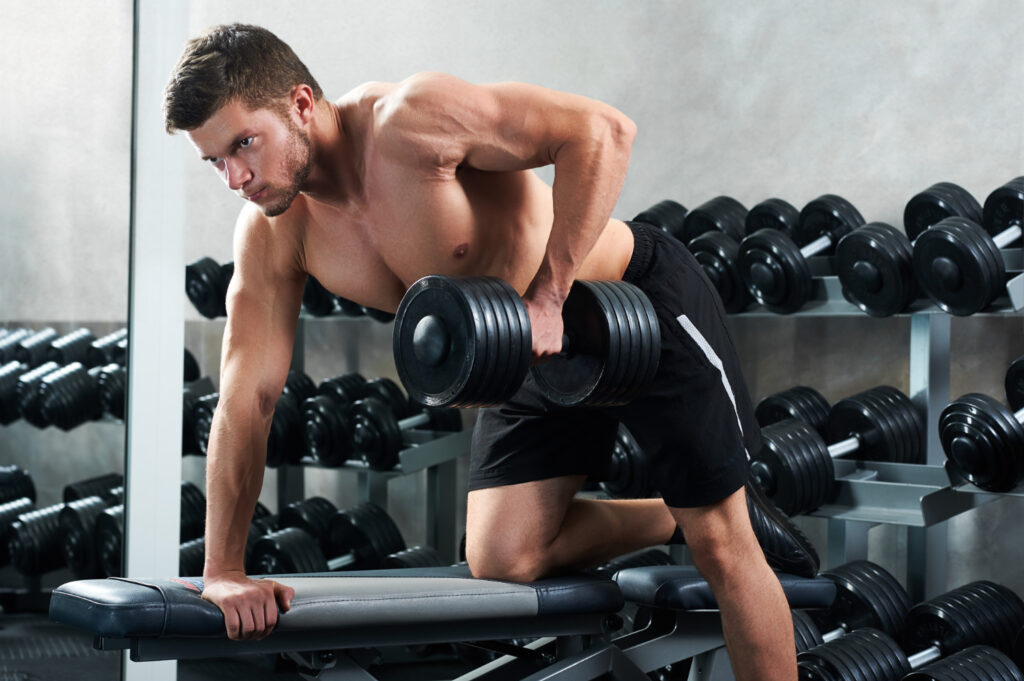
Increased pulling strength
Training your lats with dumbbells directly enhances your pulling strength. This means exercises like pull-ups, chin-ups, and deadlifts become easier to perform. Stronger lats allow you to handle more weight and execute a broader range of movements, from lifting heavy objects to performing advanced bodybuilding routines.
Improved pulling strength also contributes to better posture and reduces the risk of shoulder injuries. By focusing on lat muscles through specific dumbbell exercises, you fortify your upper body’s capability for both isometric contraction and dynamic movement.
Strengthening these muscles supports the shoulder blades and spine, making everyday activities more effortless and improving athletic performance across various sports.
Improved spine stability
Exercising with dumbbells, especially during lat workouts, significantly enhances spine stability. This key benefit stems from the engagement and strengthening of core muscles, which play a crucial role in supporting the lower back.
As you perform exercises like the dumbbell pullover or bent-over row, your core works tirelessly to maintain proper posture and alignment, consequently fortifying your spinal column.
Strengthening these muscle groups reduces the risk of back injuries and improves overall posture. It also promotes better performance in both daily activities and athletic endeavors by providing a solid foundation for movement.
Through consistent training that targets the lats using free weights, individuals experience noticeable improvements in spinal health and stability, essential for a well-rounded fitness regimen.
Top 10 Dumbbell Lat Exercises
Strengthen your lats and back with a variety of effective lat dumbbell exercises. Sculpt your muscles and improve pulling strength using these targeted movements.
1. Dumbbell Bent Over Row against Wall
Position yourself against a wall with your feet shoulder-width apart and hold a dumbbell in each hand. Lean forward, keeping your back flat and core engaged. Lift the dumbbells towards your chest, squeezing your shoulder blades together at the top of the movement.
Lower the dumbbells back down to complete one repetition. This exercise targets the latissimus dorsi, rhomboids, and lower traps while also engaging the biceps and forearms.
Ensure that you maintain proper form throughout, avoiding swinging or using momentum to lift the weights. By incorporating this exercise into your routine, you can effectively strengthen and sculpt your back muscles for improved posture and overall upper body strength.
2. Dumbbell Bent-Over Reverse Row
To continue building strength and muscle in your lats, the dumbbell bent-over reverse row is an effective exercise. Begin by holding a pair of dumbbells with an overhand grip and standing with feet shoulder-width apart.
Hinge at the hips to bring your torso parallel to the ground, keeping your back straight and core engaged. Then, pull the dumbbells towards your ribcage, squeezing your shoulder blades together at the top of the movement before slowly lowering them back down.
This exercise targets not only the latissimus dorsi but also engages other upper body muscles such as the rear deltoids, rhomboids, and biceps.
3. Dumbbell Decline Pullover
Transitioning from the Dumbbell Bent-Over Reverse Row to the Dumbbell Decline Pullover, this exercise effectively targets the lats and chest for a well-rounded workout. This compound movement engages the shoulder extensors, allowing for a deep stretch and effective engagement of the latissimus dorsi muscles.
Performing this exercise on a decline bench intensifies its impact on both muscle contraction and elongation, promoting increased strength and muscle mass in the targeted areas.
Executing the Dumbbell Decline Pullover involves controlled movements that engage various synergistic muscles, including the triceps, pectoralis major, and posterior deltoids. The exercise also activates stabilizing muscles such as the serratus anterior and core for enhanced overall body strength.
4. Dumbbell Head Supported Row
To perform the Dumbbell Head Supported Row, start by lying face down on an incline bench, with your forehead resting against the top. Hold a dumbbell in each hand and let them hang straight down toward the floor.
Begin by retracting your shoulder blades and then pull the dumbbells up toward your hips using your back muscles. Lower the weights back to the starting position under control, allowing a slight stretch in your lats before beginning the next repetition.
Ensure that you maintain a neutral spine throughout the movement to avoid straining your lower back. This exercise effectively targets your lats and provides stability to your spine while strengthening it simultaneously.
5. Dumbbell Lying Rear Delt Row
To execute the Dumbbell Lying Rear Delt Row, lay facing down on a flat bench with a dumbbell in each hand. With your arms hanging straight down below you, initiate the movement by retracting your shoulder blades and pulling the dumbbells up towards your ribcage until they are level with your body.
Ensure to keep your elbows slightly bent throughout this exercise, focusing on engaging and squeezing your rear deltoid muscles at the top of the movement. Lower the dumbbells back down slowly to complete one repetition.
This exercise effectively targets and strengthens the rear delts, providing balance to shoulder development while enhancing posture and stability. Additionally, it engages other supporting muscles such as trapezius, rhomboids, and even biceps for an all-around upper body workout.
6. Dumbbell Renegade Row
The dumbbell renegade row is an effective exercise that targets the lats, shoulders, and core muscles. Start in a high plank position with each hand holding a dumbbell. Keep your body in a straight line from head to heels as you pull one dumbbell up towards your hip while balancing on the other arm.
Lower the weight back down and repeat on the other side. This exercise not only engages your lats but also helps improve core stability and overall strength.
Executing the renegade row can help enhance shoulder stability, reinforce scapular retraction, and improve pulling strength. It’s crucial to maintain proper form throughout the movement to maximize its benefits and prevent injury.
7. Dumbbell Split Stance Bent Over Row
In a split stance, hold a dumbbell in each hand with your palms facing your body. Bend at the hips and lower your torso close to parallel with the floor while keeping your back straight.
Pull the dumbbells up toward your ribcage, squeezing your shoulder blades together. Lower the dumbbells back down with control before repeating the movement.
This exercise engages not only the lats but also targets muscles in the upper back and arms. By maintaining proper form and focusing on controlled movements, you can effectively strengthen these muscle groups while improving overall stability and posture.
8. Dumbbell Pullover on floor
Lie on your back with a dumbbell in both hands, arms stretched above your chest. Lower the dumbbell backward over your head while keeping your arms extended, feeling a stretch in your lats and chest.
Return to the starting position by pulling the weight back over your chest using only your lats and maintaining control throughout the movement.
This exercise engages the latissimus dorsi, pecs, triceps, and serratus anterior muscles while enhancing shoulder stability. It also allows for efficient muscle elongation and contraction to improve overall flexibility and strength.
9. Dumbbell Hammer Grip Incline Bench Two Arm Row
Transitioning from the Dumbbell Pullover on the floor, the Dumbbell Hammer Grip Incline Bench Two Arm Row is a great exercise for targeting the lats. To perform this exercise, sit on an incline bench with your chest against the pad and hold a dumbbell in each hand with a hammer grip.
Keeping your back straight, pull the dumbbells towards your hips while squeezing your shoulder blades together at the top of the movement. Lower the dumbbells back down slowly and repeat for the desired number of repetitions to effectively engage and strengthen your lats.
This exercise not only targets your latissimus dorsi but also engages other muscles like rhomboids, traps, and biceps. The inclined position isolates the movement and ensures strict form while preventing swinging or momentum from assisting with lifting.
10. Dumbbell Bent-over Row
To perform a dumbbell bent-over row, stand with feet shoulder-width apart, holding a dumbbell in each hand. Hinge at the hips and bend your knees slightly while keeping your back flat.
Pull the dumbbells up towards your hips, squeezing your shoulder blades together as you lift. Lower the weights back down with control and repeat for the desired number of reps.
This exercise targets the lats, rhomboids, and traps to strengthen the upper body and improve posture. Additionally, it engages the biceps, forearms, and core muscles for stability.
Recommended Sets And Reps
After mastering the Dumbbell Bent-over Row and other lat exercises, it’s time to focus on recommended sets and reps for optimal results. Aim for 3-4 sets of 8-12 repetitions per exercise to target your lats effectively.
Adjust the weight so that the final few reps feel challenging but still allow you to maintain proper form.
To continually challenge your muscles and promote growth, increase the resistance when you are consistently able to perform more than 12 reps without difficulty. Additionally, ensure adequate rest between sets—approximately 1-2 minutes—to optimize muscle recovery while maintaining intensity throughout your workout.
Sample Dumbbell Lat Workout
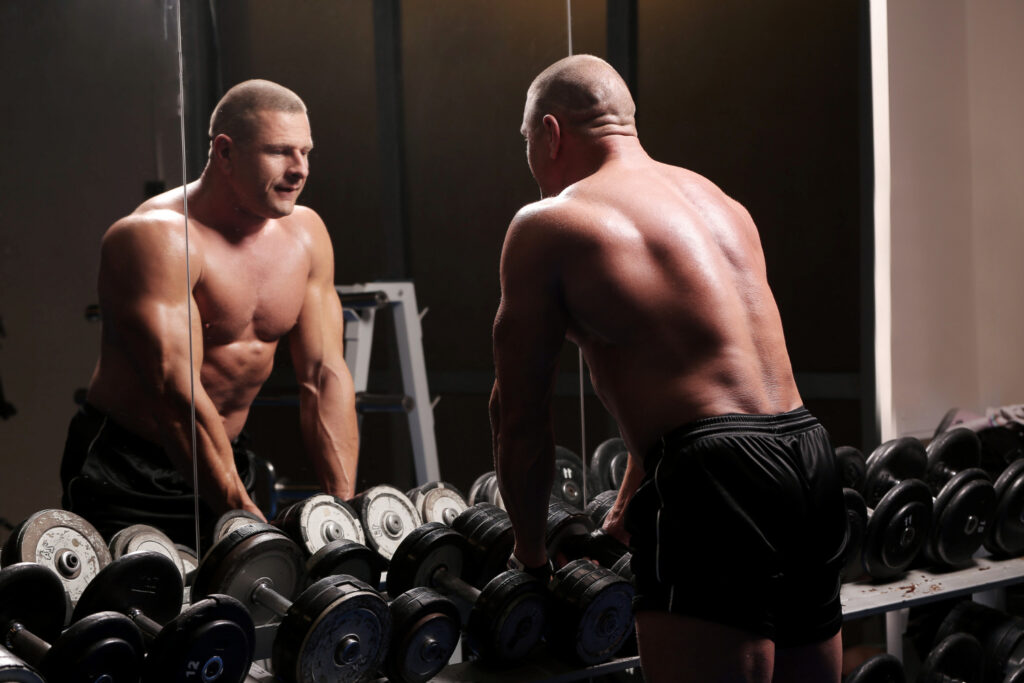
Performing a sample dumbbell lat workout is an effective way to target and strengthen your back muscles. Incorporating exercises like dumbbell bent-over rows, head-supported rows, and pullovers can help you build a stronger back using lat dumbbell exercises.
Dumbbell-Only Lats Workout Routine
Performing a dumbbell-only lats workout routine can effectively target and strengthen the latissimus dorsi muscles in your back. Start with exercises like the dumbbell bent-over row, dumbbell split stance bent-over row, and dumbbell head supported row to engage and build muscle mass in your lats.
Incorporate sets and reps that challenge and push your strength levels, such as 3-4 sets of 8-12 reps for each exercise to promote progressive overload. Additionally, you can enhance this routine by adding variations like pullovers or incline bench rows using dumbbells to fully engage your lats while promoting muscle growth.
Dumbbell, Pull Up Bar, Lat Pull Down Workout Routine
Performing a well-rounded lat workout routine can greatly benefit from incorporating various equipment, including dumbbells, pull-up bars, and lat pull-down machines. Start your routine with pull-ups on the bar to engage your lats and upper body muscles effectively.
Following this, move on to the lat pull-down machine for isolating and targeting the latissimus dorsi more directly. Then switch to using dumbbells for exercises like bent-over rows or renegade rows, which can further challenge and strengthen your back and lats while also engaging other stabilizing muscles.
Incorporating these different pieces of equipment into one workout routine allows you to target your lats from multiple angles and provide a well-rounded training stimulus for muscle growth and strength development in your back.
Tips for Progressing with Dumbbell Lat Exercises
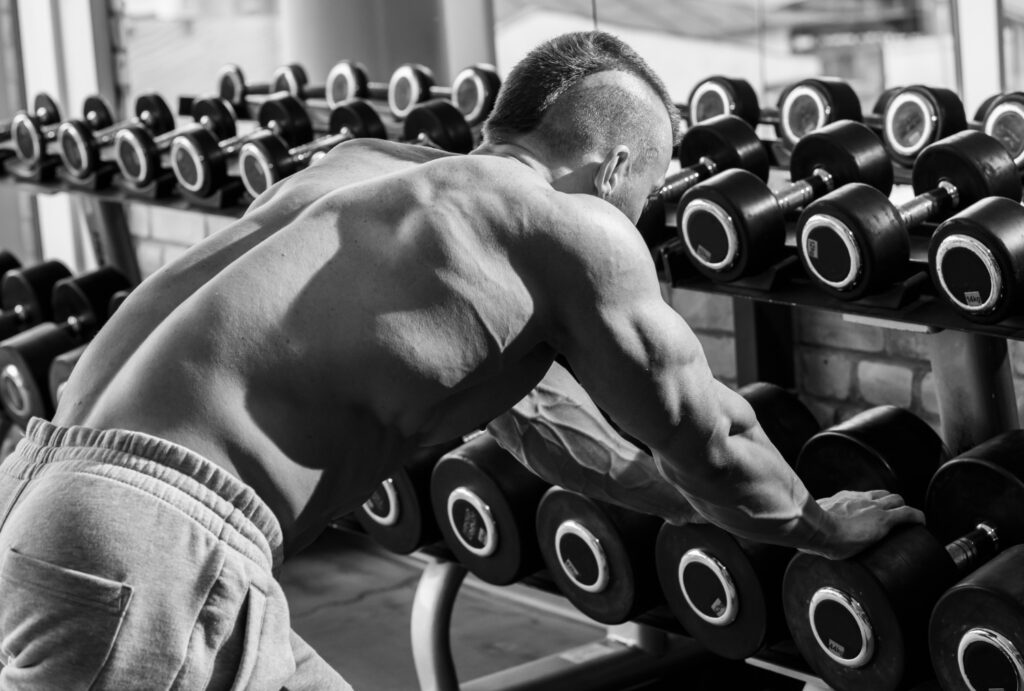
To progress with dumbbell lat exercises, vary your hand grips to target different areas of the lats and increase pulling strength. Add weight or reps gradually as you become more comfortable with each exercise and consider incorporating other equipment like a barbell or cable machine for variety in your workouts.
Varying hand grips
Experimenting with different hand grips during dumbbell lat exercises can target various areas of the back and lats. Utilizing an overhand grip targets the outer portion of the lats, while an underhand grip emphasizes the lower lats and biceps.
Additionally, a neutral grip helps engage the mid-back muscles, providing a well-rounded workout for overall back development. By incorporating these variations into your routine, you can effectively stimulate different muscle groups within the back and lats.
Switching up your hand grips not only adds variety to your workouts but also ensures that you are hitting all areas of your back for balanced strength and development.
Adding weight or increasing reps
To challenge your lat muscles further, consider adding weight to your dumbbell exercises gradually. This progression helps build strength and muscle mass over time. Alternatively, you can increase the number of reps for a more endurance-focused workout, enhancing muscular stamina and definition.
Experimenting with different weights and rep ranges is key to continual progress in your lat training journey.
As you continue to push yourself in your lat workouts, incorporating additional equipment like a pull-up bar or resistance bands can bring variety and new challenges to keep your muscles adapting and growing.
Incorporating other equipment (barbell, bodyweight, cable machine, etc.)

To challenge your lat muscles further and add variety to your workouts, consider incorporating other equipment such as barbells, bodyweight exercises, or cable machines. Try adding barbell rows to engage multiple muscle groups or utilize a pull-up bar for an effective bodyweight exercise that targets the lats.
By integrating cable machines into your routine, you can perform exercises like lat pulldowns or cable rows with different attachments to keep challenging your back muscles in various ways.
Each equipment offers unique benefits and allows you to customize your workout based on your preferences and fitness goals.
The importance of proper form and warm-up
Transitioning from incorporating various equipment to maximize your lat training, it’s important to prioritize proper form and a thorough warm-up. Maintaining correct posture and technique during exercises not only minimizes the risk of injury but also ensures that you target the intended muscles effectively.
Proper warm-up routines are vital for preparing your body, gradually increasing blood flow, and enhancing overall flexibility before engaging in any strenuous activity.
Executing exercises with proper form helps prevent straining or overloading joints and tendons, reducing the likelihood of muscular imbalances or potential long-term injuries. Similarly, integrating dynamic stretches or light cardio as part of your warm-up routine can alleviate muscle stiffness, allowing for better performance during workouts while promoting improved blood circulation throughout the body.
Final takeaways
Transitioning from focusing on the importance of proper form and warm-up, it is crucial to remember that consistency in training and progression is key. Adhering to a well-rounded workout routine that includes a variety of dumbbell lat exercises will help in developing overall back strength, stability, and muscle mass.
Each exercise should be performed with attention to form while gradually increasing weight or reps as strength improves. Additionally, incorporating different hand grips and equipment such as barbells or bodyweight exercises can provide variation and further challenge the lats for optimal growth and development.
Remember, gradual progression combined with proper form will yield significant improvements in back strength and aesthetics over time.
Conclusion

Want to build a stronger back and lats? These 10 effective lat dumbbell exercises offer practical and efficient ways to achieve your fitness goals. Have you considered varying hand grips or incorporating other equipment like barbells or cable machines for an added challenge? Push yourself by adding weight or increasing reps progressively for optimal results.
By focusing on proper form, warm-ups, and consistent training, you can make significant improvements in your strength and physique. Take action today and elevate your back and lat training with these powerful exercises!
FAQs
1. What muscles do lat dumbbell exercises work?
Lat dumbbell exercises mainly target your back, specifically the latissimus dorsi (lats), but they also engage other muscles like the biceps brachii, trapezius, and gluteus maximus for a stronger back and lower body.
2. Can I improve my pullups with lat exercises?
Yes! By strengthening your lats, shoulder extensions, and arm muscles through specific lat exercises, you can significantly improve your ability to perform pullups and chin-ups.
3. Are there any benefits to using dumbbells for back workouts?
Using dumbbells allows for a greater range of motion in exercises like rows or flyes, targeting the lats more effectively. They also help in correcting muscle imbalances by working each side of your body independently.
4. How does proper form affect my workout?
Maintaining proper form during lat exercises ensures effective muscle engagement and reduces the risk of injury. Focus on controlled movements such as adduction and abduction of the upper arm bone (humerus) to maximize benefits.
5. Do these exercises require additional equipment besides dumbbells?
While many lat exercises can be done with just dumbbells, incorporating a bench for support during rows or adding resistance with a dip belt during weighted pull-ups can enhance your strength training routine.
6. Can beginners perform these lat dumbbell exercises?
Absolutely! Beginners should start with lighter weights to focus on mastering technique—like maintaining a standing position that promotes shoulder extension without compromising form—and gradually increase weight as their strength improves.

Author
Years ago, the spark of my life’s passion ignited in my mind the moment I stepped into the local gym for the first time. The inaugural bead of perspiration, the initial endeavor, the very first surge of endorphins, and a sense of pride that washed over me post-workout marked the beginning of my deep-seated interest in strength sports, fitness, and sports nutrition. This very curiosity blossomed rapidly into a profound fascination, propelling me to earn a Master’s degree in Physical Education from the Academy of Physical Education in Krakow, followed by a Sports Manager diploma from the Jagiellonian University. My journey of growth led me to gain more specialized qualifications, such as being a certified personal trainer with a focus on sports dietetics, a lifeguard, and an instructor for wellness and corrective gymnastics. Theoretical knowledge paired seamlessly with practical experience, reinforcing my belief that the transformation of individuals under my guidance was also a reflection of my personal growth. This belief holds true even today. Each day, I strive to push the boundaries and explore new realms. These realms gently elevate me to greater heights. The unique combination of passion for my field and the continuous quest for growth fuels my drive to break new ground.





